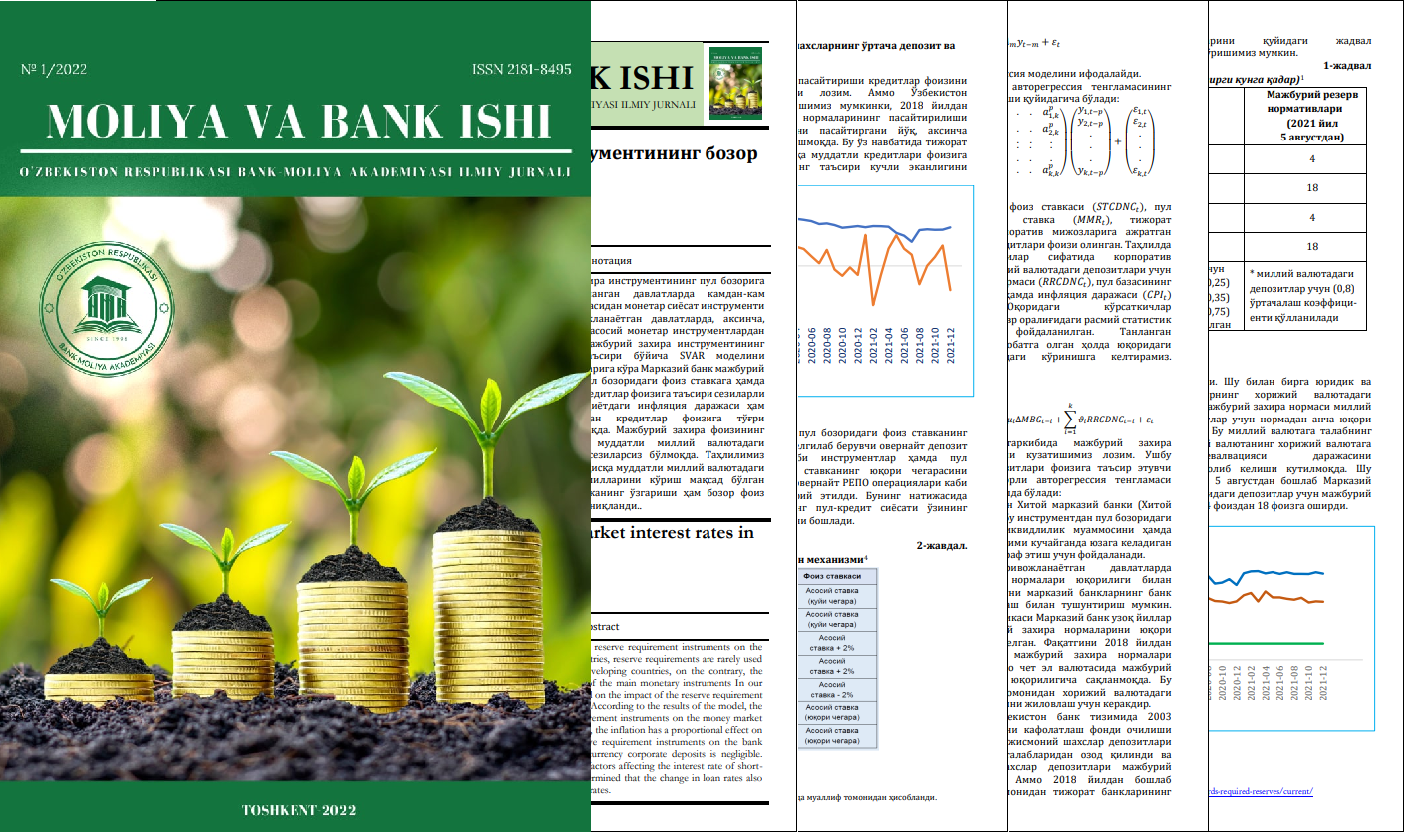Nashr qilingan 2022-12-29
Kalit so'zlar
- savdo, savdoni moliyalshtirish, tasqhi savdo, ekasport, import, merkantilizm, qiyosiy ustunlik, mutlaq ustunlik, Xeksher-Olinning omillar ta'minoti, Xalqaro mahsulot hayotiy sikli, Yangi savdo nazariyasi.
Iqtibos
Аннотация
Mazkur maqolada savdoni moliyalashtirishning tashqi savdo operatsiyalariga ta’siri tadqiq etilgan. Xalqaro savdoni moliyaviy qo‘llabquvvatlash uzoq tarixga ega hisoblanadi. Eramizdan oldingi davrda ham Mesopotamiyada tashqi savdoni moliyaviy qo‘llab-quvvatlanganligini isbotlovchi faktlarni arxeologlar tomonidan topilgan. Qadimdan tashqi savdoni moliyalashtirishda ayriboshlash hujjati asosida xaridorlarga yoki sotuvchilarga kredit yoki qarz mablag‘lari tadqim etilgan. Xalqaro savdoni moliyalashtirish riskli va uzoq vaqt oladigan jarayon hisoblanadi. Shuning uchun ham savdo sheriklari mahsulot va xizmatlarning faqatgina narxi va xususiyatlarini emas, balki yetkazib berish shartlari hamda puli toʻlash vaqtlarini ham kelishishlari kerak boʻladi. Risklarni taqsimlash va ishlab chiqarish va sotish orasidagi davr mobaynida moliyalashtirish uchun turlicha moliyalashtirish bitimlari tuziladi.
Библиографические ссылки
- Leamer, Edward E., and James Levinsohn. "International trade theory: the evidence." Handbook of international economics 3 (1995): 1339-1394.
- Markusen, James R., et al. International trade: Theory and evidence. New York: McGraw-Hill, 1995.
- Feenstra, Robert C. Advanced international trade: theory and evidence. Princeton university press, 2015.
- Zhang, Wei-Bin. "International trade theory." Capital, knowledge, economic structure, money (2008).
- Krugman, Paul R. "On the relationship between trade theory and location theory." Review of international economics 1.2 (1993): 110-122.
- Krugman, Paul R. International trade: Theory and policy. Pearson, 2018.
- Carter, Colin. Imperfect competition and political economy: the new trade theory in agricultural trade research. CRC Press, 2019.
- Gârleanu, Nicolae, Stavros Panageas, and Jianfeng Yu. "Impediments to financial trade: Theory and applications." The Review of Financial Studies 33.6 (2020): 2697-2727.
- Вахабов, А. В., Н. Х. Жумаев, and Э. А. Хошимов. "Жаҳон молиявий-иқтисодий инқирози: сабаблари, хусусиятлари ва иқтисодиётга таъсирини юмшатиш йўллари." Т.:“Академнашр 141 (2009).
- Жумаев, Н. "Рақамли иқтисодиёт нега керак ва у нима беради." Jumaev N. Why digital economy is needed and what it provides) https://review. uz (2020).
- Petersen, Mitchell A., and Raghuram G. Rajan. "Trade credit: theories and evidence." The review of financial studies 10.3 (1997): 661-691.
- García-Teruel, P. J. & Martínez-Solano, P. M. (2010). Determinants of trade credit: a comparative study of European SMEs. International Small Business Journal, 28(3), 215-233
- Long, M. S., Malitz, I. B. & Ravid, A. (1993). Trade credit, quality guarantees, and product marketability. Financial Management, 22(4), 117-127.
- Emery, G. W. (1984). A pure financial explanation for trade credit. Journal of Financial and Quantitative Analysis, 19(3), 271-285.
- Ng, C. K., Smith, J. K. & Smith, R. L. (1999). Evidence on the determinants of credit terms used in interfirm trade. The Journal of Finance, 54(3), 1109-1129
- Carvalho,C.J.D. & Schiozer,R.F. (2015). Determinants of supply and demand for trade credit by micro, small and medium-sized enterprises. Revista Contabilidade and Finanças, 26(68), 208-222.
- Schwartz, R. A. (1974). An economic model of trade credit. Journal of Financial and
- Quantitative Analysis, 9(04), 643-657
- Ferris, J. S. (1981). A transactions theory of trade credit use. The Quarterly Journal of Economics, 96(2), 243-270.
- Khannaev, Sherzod. "O ‘ZBEKISTON TIJORAT BANKLARI MONOPOL KUCHINI LERNER INDEKSI ASOSIDA BAHOLASH." SCIENCE AND INNOVATIVE DEVELOPMENT 2 (2020): 16-23.
- Daripa, A. & Nilsen, J. (2011). Ensuring sales: A theory of inter-firm credit. American Economic Journal: Microeconomics, 3(1), 245-279
- Mateut, S. (2014). Reverse trade credit or default risk? Explaining the use of prepayments by firms. Journal of Corporate Finance, 29, 303-326.
- Nadiri, M. I. (1969). The determinants of trade credit in the US total manufacturing sector. Econometrica: Journal of the Econometric Society, 37(3), 408-423
- Khannayev, S. K. "EFFICIENCY ANALYSIS OF ACTIVITIES OF BANKS OF DIFFERENT PROPERTY." Economics and Innovative Technologies 2019.1 (2019): 12.
- Burkart, M. & Ellingsen, T. (2004). In-kind finance: A theory of trade credit. The American Economic Review, 94(3), 569-590. 10.1257/0002828041464579.

